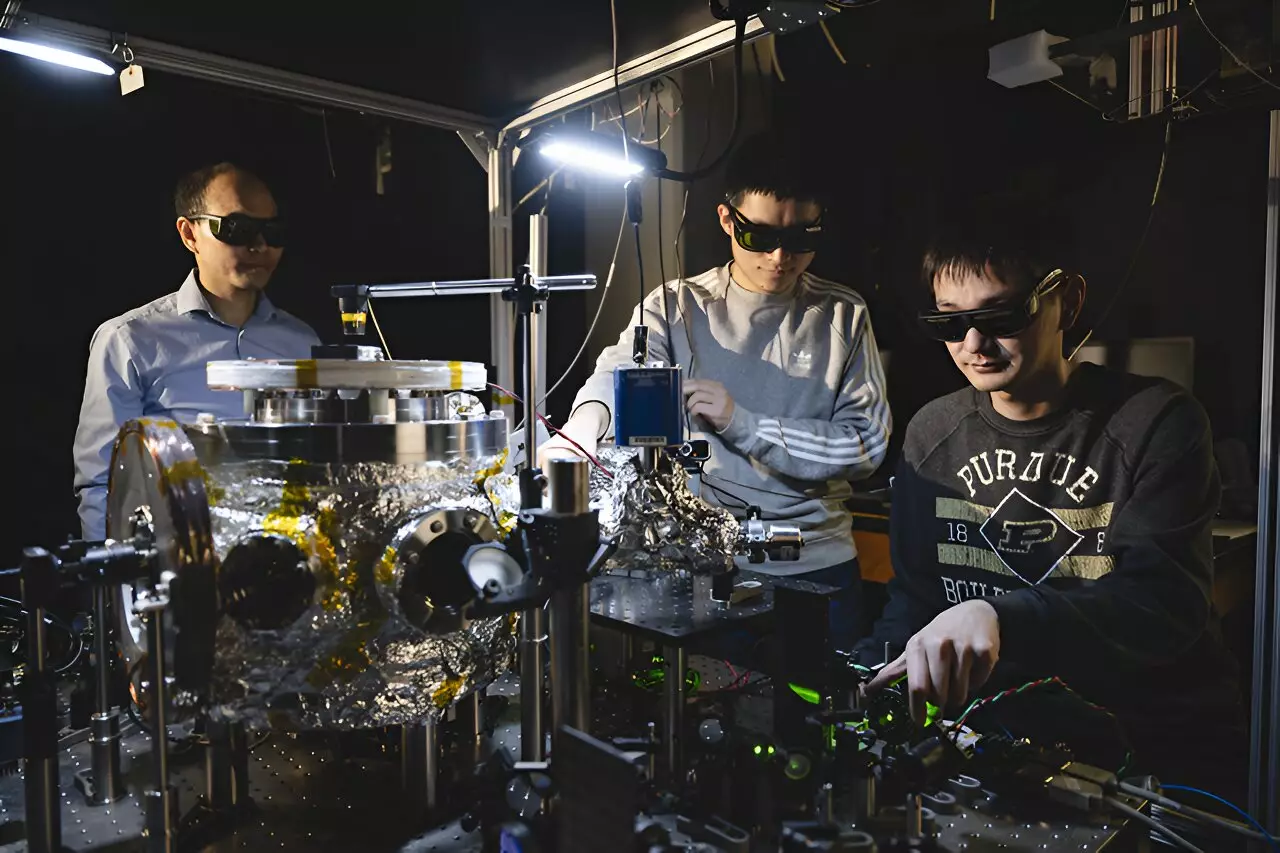In a remarkable fusion of fun and science, physicists at Purdue University have achieved a groundbreaking feat in quantum mechanics by creating a miniature disco party utilizing fluorescent nanodiamonds. With a unique setup that allows these diamonds to be levitated in a vacuum and spun at unprecedented speeds, the team is conducting critical research on spin qubits—one of the key components in quantum computing. Under the direction of Tongcang Li, a professor of Physics and Astronomy and Electrical and Computer Engineering, this innovative research was recently published in the prestigious journal *Nature Communications*. Their work has already drawn attention from experts who consider it a significant contribution to the study of rotating quantum systems and optomechanics.
The exquisite mechanism that makes this experiment possible involves the levitation of nanodiamonds, each measuring around 750 nanometers in diameter. These tiny gems are crafted under high pressure and temperature, and are specifically designed to house electron spin qubits through the creation of nitrogen-vacancy centers. When exposed to a green laser, these diamonds emit red light, providing crucial information regarding the electron spin states. Such a meticulous setup enables the researchers to manipulate and measure the behavior of these spins effectively.
Noteworthy is the method of levitation achieved through an ion trap in high vacuum, allowing for unprecedented control over both the diamond and its inherent properties. In a previous study, attempts to maintain the integrity of levitated diamonds were fraught with challenges such as loss and the difficulty of spin readouts. By leveraging their innovative techniques, Li and his team have ushered in a new era of experimentation in quantum physics.
A particularly intriguing aspect of Li’s research involves the observation of the Berry phase—an effect akin to a molecular dance that depends on the geometric properties of the system. The team took their experiments a step further by spinning the diamonds at speeds reaching an astounding 1.2 billion rotations per minute. This rapid rotation allows them to study how these conditions affect spin qubits, yielding insights into their operational dynamics in a state closest to vacuum.
Understanding the Berry phase is crucial since it offers insights into the relationship between quantum mechanics and classical mechanics, touching upon the unanswered questions surrounding gravity in a quantum framework. This underscores the project’s broader implications, as delineated by Li: understanding quantum gravity could lead to revolutionary advances in how we perceive the fundamental forces of nature.
Furthermore, the researchers have showcased their ability to manipulate the spin direction of the nanodiamonds by adjusting the driving voltage applied to the system. Depending on the configuration of this signal, the nanodiamonds can be made to rotate in precise directions—either clockwise or counterclockwise—introducing a dynamic flexibility to their experimental setup that could have far-reaching implications for future quantum technologies.
The research team, comprised predominantly of graduate students and postdoctoral fellows from Purdue, collaborated extensively with experts from Sandia National Laboratories and Washington University in St. Louis. Together, they facilitated design improvements and provided insights that ultimately refined the research methodology.
The advancements achieved in this experiment do not merely reside in academia; they hold potential for various practical applications, particularly as we explore how levitated micro and nanoscale particles could revolutionize the fields of navigation and communication. For instance, ongoing research by the US Air Force Research Laboratory into optically levitated nanoparticles exemplifies the real-world relevance of this work, addressing pressing challenges in technology fields.
Li’s anticipation of the potential impact of his team’s discoveries resonates strongly within the scientific community. As the intersection of quantum mechanics and gravity continues to be a frontier of study, the operational capabilities of these specialized nanodiamonds may afford scientists the tools necessary to conduct precise measurements and unlock the mysteries of gravity at a quantum scale.
Purdue University’s pioneering research using spinning fluorescent nanodiamonds represents a confluence of cutting-edge science and visionary experimentation. As they harness the principles of levitodynamics and probe the enigmatic realms of quantum mechanics, this team of dedicated scientists is not just hosting a peculiar disco party; they are opening doors to potential breakthroughs that could reshape our understanding of gravity and quantum phenomena. Their innovative methods pave the way for future explorations that bridge theoretical advancements with practical applications, assuring that the dance between science and technology will continue for years to come.


Leave a Reply